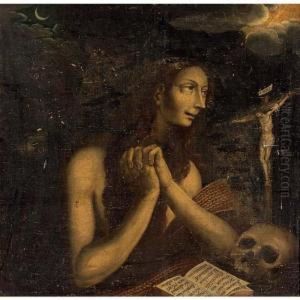Pieter Iii Van Der Borcht Paintings
Pieter III van der Borcht was a Flemish artist born in 1545 in Mechelen, which was then part of the Habsburg Netherlands. He belonged to a family of artists and is often distinguished from other family members by the designation 'III'. His grandfather, Pieter van der Borcht the Elder, and his father, Pieter II van der Borcht, were both artists, and his family had a significant impact on the artistic scene in Mechelen during the 16th and early 17th centuries.
Van der Borcht the Younger was known primarily for his work as a printmaker. He became a master in the Guild of Saint Luke in Mechelen in 1566, which suggests that he was trained in the arts from a young age. He was also active as a publisher of prints, a role that was often linked with being a printmaker during that period. His works include a variety of subjects such as religious themes, allegories, and landscapes. However, he is perhaps best known for his botanical illustrations and engravings that were used in scientific publications of the time.
His contributions to botanical art were significant, as he collaborated with some of the prominent scientists and botanists of his time. His illustrations were noted for their detail and accuracy, and they were often used in herbals—books that described herbs and their uses. Van der Borcht's work in this field reflects the broader interest in naturalism and the study of the natural world that was a hallmark of the Renaissance.
Pieter III van der Borcht's career spanned a period of significant change in the Low Countries, including the turmoil of the Eighty Years' War and the shifting political landscape that resulted from it. Despite these challenges, he managed to maintain a successful career. His legacy is preserved through his engravings and illustrations, which continue to be appreciated for their craftsmanship and contribution to early modern art and science.
He died in Mechelen in 1608, leaving behind a body of work that would influence future generations of printmakers and illustrators. His precise and detailed approach to botanical illustration was particularly influential and can be seen as a precursor to the scientific illustrations that would become prominent in the following centuries.
